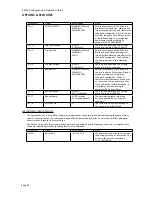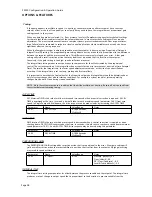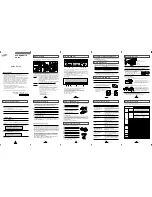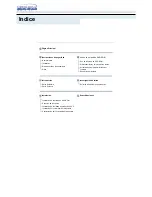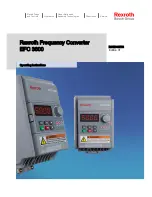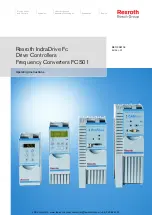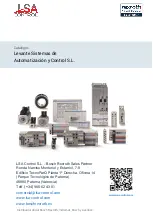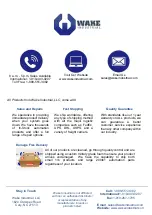
PS200 Configuration & Operation Guide
OPTIONS & FEATURES
Page 95
The BEP may easily be determined two ways; interpolation of the performance curves or calculation using the basic
equation of:
P
BEP
=
Q
GPM
x H
FT
3960 x Efficiency
x S.G.
If the power is interpolated from the performance curve, specific gravity (SG) and viscosity must be accounted for.
NOTE - PumpSmart TPP assumes that specific gravity and viscosity remain constant during operation. It is
recommended that these fluctuations do not - 5%.
The power at BEP is only useful if the speed is also known. The speed is used for factoring the reference point and
setpoints according to the Affinity Laws.
Parameter
Name
Value/Range
Note
25.08
BEP POWER
0-9999
This is the power at the Best Efficiency
Point of the pump (at installed impeller
diameter) with specific gravity and
viscosity effects considered.
The default of this entry is 90% of the
motor power, as defined by 11.08
MOTOR NOM POWER
25.10
BEP SPEED
0-9999
This is the speed that the BEP POWER is
expressed. The default value for this
entry is 11.07 MOTOR FL RPM. This
value should be based upon your
performance curve calculations.
ESTABLISHING LOAD SETPOINTS
There are three general conditions that the PumpSmart TPP logic can protect against; Operation below minimum
flow, dry running, and run-out conditions. Conditions such as cavitation will also be identified, however the
response of the PumpSmart system to these conditions will be based upon how severe their impact is on the
pump loading.
The first underload setpoint to set is Minimum Flow. The MINIMUM FLOW TORQUE is expressed as a percentage
(%) of the BEP Power. The load at minimum flow may be determined prior to operation by graphical interpolation
of the pump performance curve. PumpSmart parameter 25.18 CALC TEST TRQ% may also be used when the pump
is operating. This parameter will display the current torque, as a percentage of the speed corrected BEP torque,
and may be used directly to set 25.12 MIN FLOW TORQUE.
Example: An ANSI 4x6-13 operating on water has a BEP POWER of 56 HP when at 1780 RPM. The minimum flow
power is estimated at 34 HP at 1780 RPM. The MIN FLOW TORQUE setpoint would be 34HP/56 HP, or 61%. This
value could be verified by checking parameter 25.18 CALC TEST TRQ% when running the pump at 1780 RPM and
throttling it to minimum flow.
The second underload setpoint identifies Dry Running conditions. A dry run condition could be operating with no
fluid in the suction, or in a severely cavitating state. Dry run conditions can normally be estimated as 10% below
the power at shut-off (zero flow). This value can be estimated by interpolating the pump performance curve.
!
!! WARNING !!
Do not attempt to determine the dry running setpoint by operating the pump in dry-run or severe
cavitation states. Permanent damage or failure to the pump may occur.
Example: An ANSI 4x6-13 operating on water has a BEP POWER of 56 HP when at 1780 RPM. The power at shut-
off is estimated at 26 HP when at 1780 RPM. The DRY RUN TORQUE setpoint would be (26HP/56 HP) x 0.9, or 42%
The last setpoint to configure is the run-out load. In this condition, pump power is increasing as the pump runs
out in flow. PumpSmart can identify this condition and slow the pump down to an acceptable loading condition.
This condition may be determined through performance curve interpolation, calculation, or through actual
operation at the run-out condition.
Summary of Contents for PumpSmart PS200
Page 1: ... PUMPSMART CONTROL SOLUTIONS PS200 Version 4 0 Configuration Operation Guide ...
Page 2: ......
Page 4: ......
Page 8: ......
Page 26: ......
Page 72: ......
Page 105: ......
Page 119: ......
Page 146: ...PS200 Configuration Operation Guide APPENDIX A 3 PARAMETER LISTING Page 143 ...
Page 147: ......
Page 158: ......
















